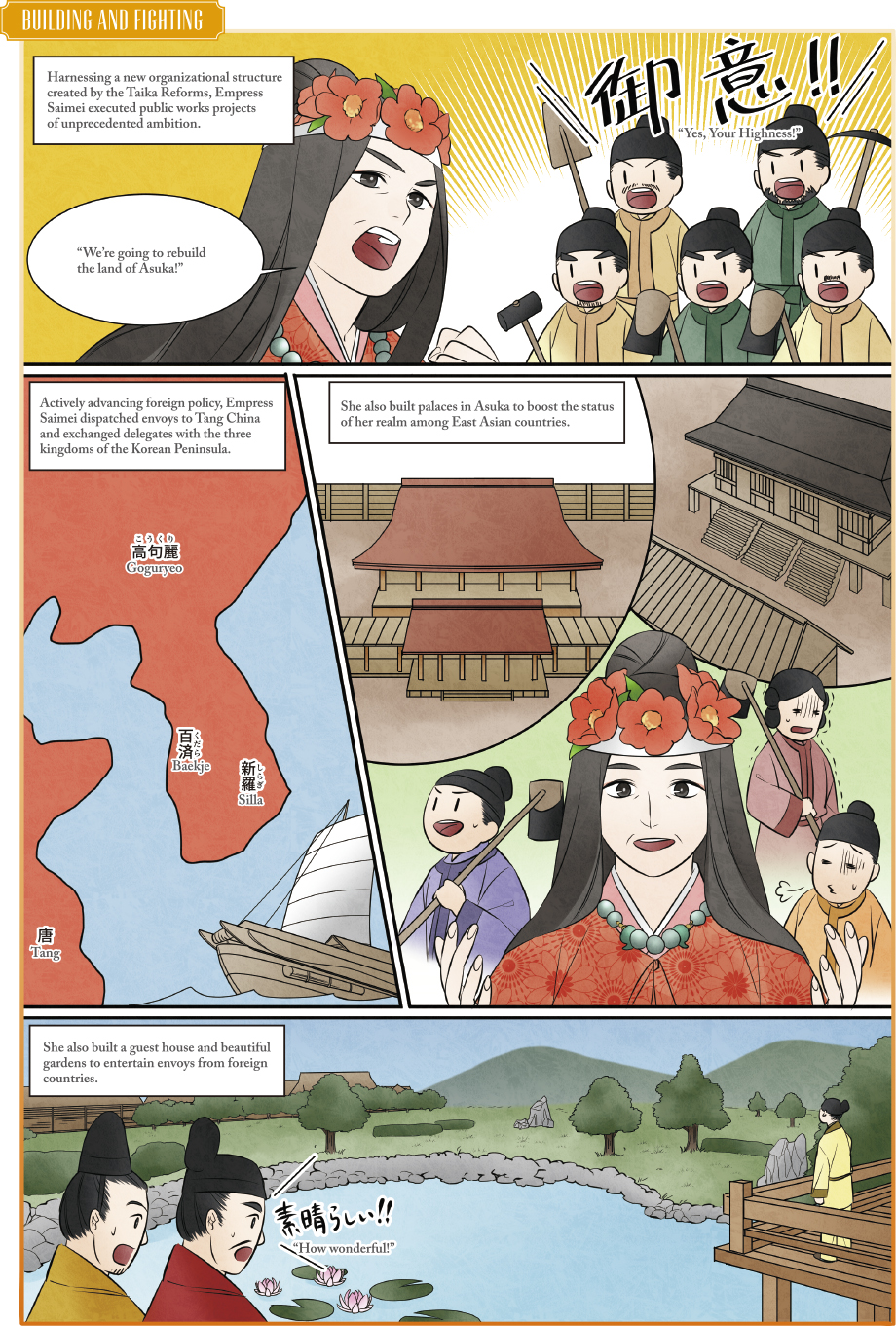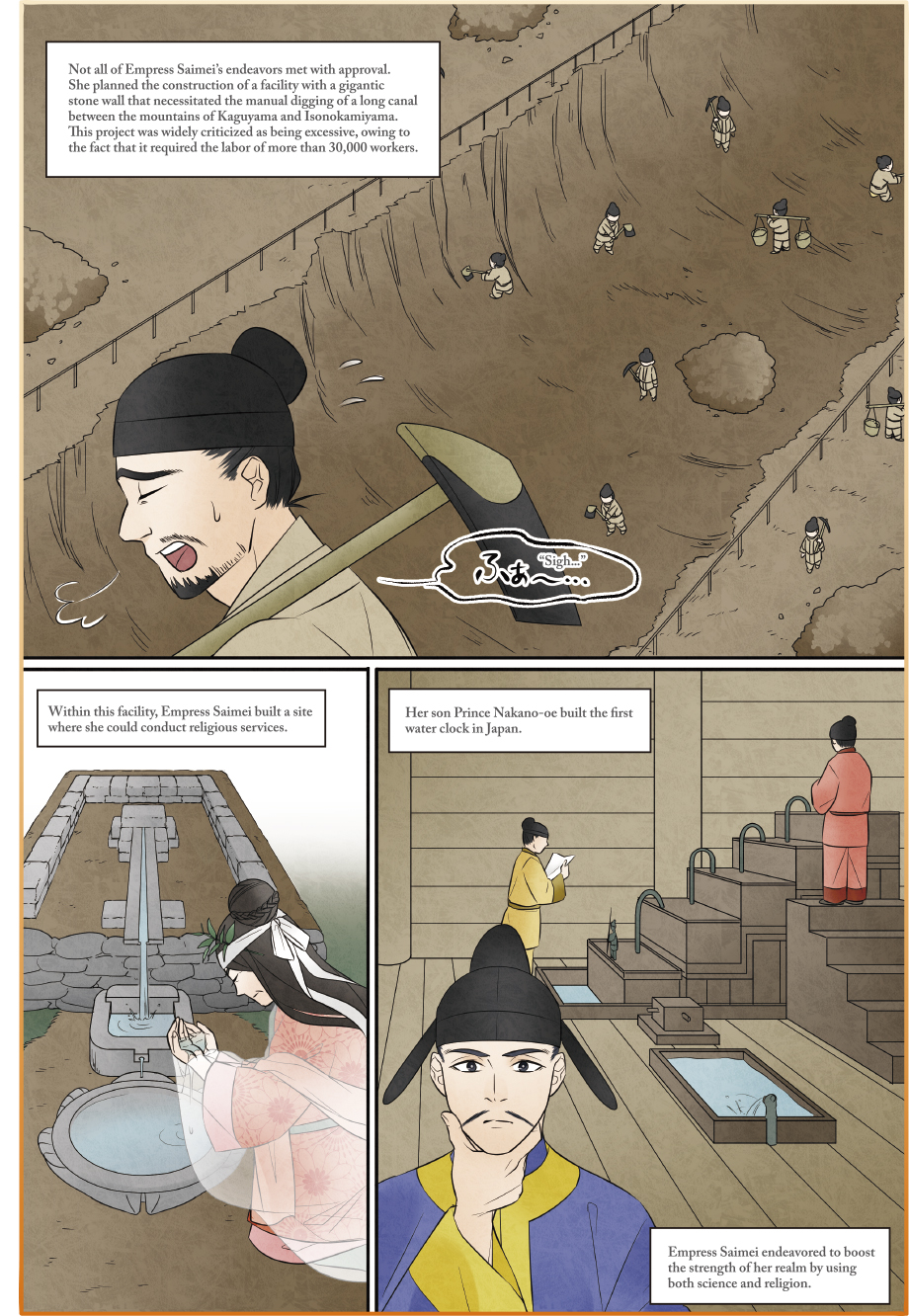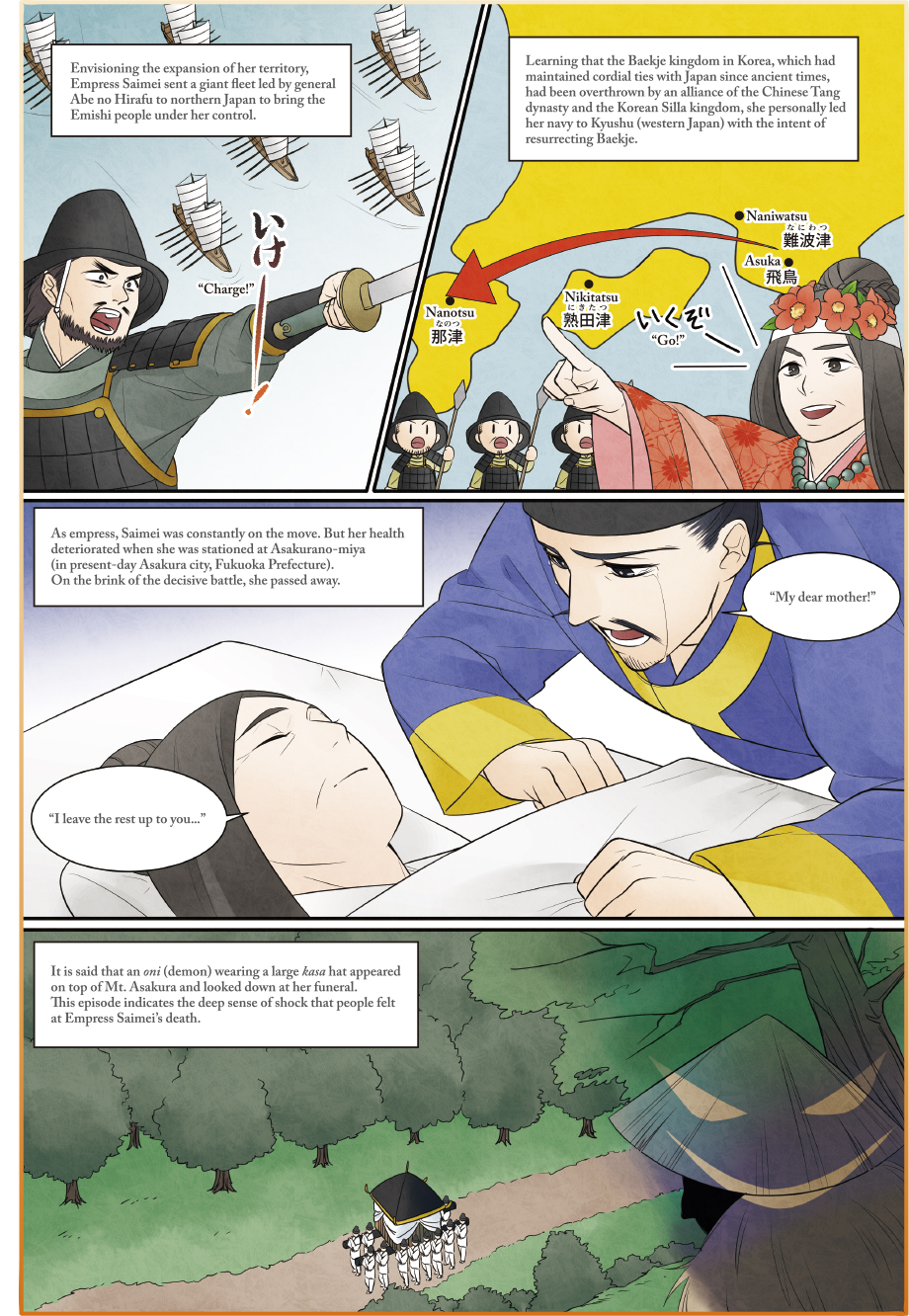Freewheeling empress envisions an affluent and powerful nation
Stones make Asuka a rich and spectacular capital
Empress Saimei, who reascended to the throne at Asuka, undertook large-scale public works projects in order to make Asuka a cosmopolitan city that could rival those in Tang China or the three kingdoms of the Korean Peninsula. Characteristic of these efforts were numerous buildings and structures made of stone. To the delight of archeology enthusiasts near and far, recent years have brought the discovery of strange-looking stone statues and the remains of a robust wall. The large canal she built has been unfairly criticized as being a hasty civil works project. But it is now widely accepted that the canal was constructed with two purposes: to irrigate fields and to form a moat that would deter enemy invasions. It seems the forward-looking Empress Saimei was strongly attracted to the timeless longevity of stone.
A mysterious death on the brink of battle
Empress Saimei left Naniwatsu and crossed the Seto Inland Sea toward Kyushu with the aim of organizing a naval expedition to aid the Baekje kingdom of Korea. She stopped by at Nikitatsu, where Lady Nukata, her lady-in-waiting, wrote this famous poem on her behalf to boost soldiers’ morale: “At Nikitatsu / We have waited for the moon / Before boarding our boat; / Now the tide is in at last / Come, let’s go rowing!” * Her party eventually reached Tsukushi (part of present-day Fukuoka) and built the Asakurano-miya palace. The palace is believed to have been constructed from timber taken from around Asakura Shrine. According to superstitious belief, the subsequent appearance of a ghostly atmospheric light called onibi (“demon fire”) caused the sudden illness and death of Saimei and many of her court servants. It is said that an oni (demon) appeared during her funeral. Accounts of this oni differ. Some say it was a deity from Mt. Asakura, while others say it was the ghost of Soga no Iruka. The truth remains shrouded in mystery. Empress Saimei eschewed selfish desires and devoted her life to her nation. Before passing away at the age of 68, she instructed her son Prince Nakano-oe not to waste a great amount of labor on building her tomb.
* Translation by Edwin A. Cranston



